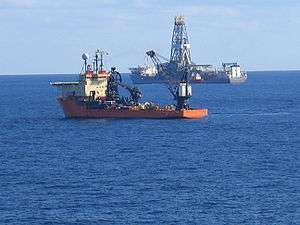Natural gas field

Natural gas originates by the same geological thermal cracking process that converts kerogen to petroleum. As a consequence, oil and natural gas are often found together. In common usage, deposits rich in oil are known as oil fields, and deposits rich in natural gas are called natural gas fields.
In general, organic sediments buried in depths of 1,000 m to 6,000 m (at temperatures of 60 °C to 150 °C) generate oil, while sediments buried deeper and at higher temperatures generate natural gas. The deeper the source, the "drier" the gas (that is, the smaller the proportion of condensates in the gas). Because both oil and natural gas are lighter than water, they tend to rise from their sources until they either seep to the surface or are trapped by a non-permeable stratigraphic trap. They can be extracted from the trap by drilling.
The largest natural gas field is South Pars/Asalouyeh gas field, which is shared between Iran and Qatar. The second largest natural gas field is the Urengoy gas field in Russia. The gas field Haynesville Shale in Louisiana-Texas has been projected bigger than South Pars, but since this is a new well its size has not yet been officially recorded.
Offshore gas fields

Like oil, natural gas is often found underwater in offshore gas fields such as the North Sea, Corrib Gas Field off Ireland, and the Sable Offshore Energy Project in the Scotian Shelf near Sable Island. The technology utilized to extract and transport offshore natural gas is different from land-based fields in that a few, very large rigs are usually used, due to the cost and logistical difficulties in working over water. Rising gas prices in the early 21st century encouraged drillers to revisit fields that previously were not considered economically viable. For example, in 2008 McMoran Exploration passed a drilling depth of over 32,000 feet (9754 m) (the deepest test well in the history of gas production) at the Blackbeard site in the Gulf of Mexico.[1] Exxon Mobil's drill rig there had reached 30,000 feet by 2006 without finding gas, before it abandoned the site.
See also
- General
- Caprock
- Gazprom
- List of natural gas fields
- Oil field
- Stranded gas reserve
- Underground hydrogen storage
- Offshore aspects
- Other
References
- ↑ A Famed Dry Hole Gets a Second Shot, Wall Street Journal, 21 July 2008, p.B1
Further reading
- Hyne, Norman J. (2001). Nontechnical guide to petroleum geology, exploration, drilling, and production (2nd ed.). Tulsa, Oklahoma: PennWell Corporation. ISBN 0-87814-823-X